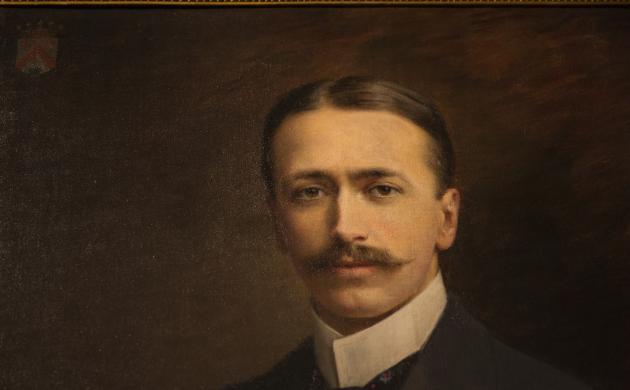An intense bond
The closeness of the bond between mother and son can be seen from their lives. Fritz lived with his mother all his life, and added her own name to his in 1887. For her part, she supported him actively in his passion for art. They shared the same tastes, frequently travelled together, looking for artworks, and would bid on one another’s behalf at public auctions. We know this from Fritz’s auction catalogues, in which either ‘musée’ or ‘maman’ is noted as the buyer. Henriëtte thus played an important role in the formation of the collection.
New museum
After Fritz’s death, Henriëtte van den Bergh took the famous Antwerp architect Joseph Hertogs under her wing, and it was Hertogs who built the new museum next to the family home. This stands at the corner of Lange Gasthuisstraat and Arenbergstraat. Its Gothic style recalls Flemish patrician houses from the 16th century, the great golden age of Antwerp; the façade is even a copy of such a house.
Modern
By the end of 1904, somewhat more than three years after Fritz’s death, the private museum had been completed. It can be visited by arrangement, by invitation and on a number of public holidays every year. The museum keeps its collection items under optimal conditions and is well protected. Henriëtte van den Bergh was also involved in providing the public with accurate information and in academic research. She died in 1920 at the age of 81. She had already donated the collection and the house to a Board of Trustees in 1906. Since 1951, the museum has been managed as a city museum.
His own museum?
Did Fritz Mayer van den Bergh want his own museum? There can be no doubt that he did. For example, for some of his purchases he wrote ‘musée’ in the auction catalogue. He also purchased some of the future building’s fixtures and furnishings, including mantelpieces, furniture and ceiling beams. Its distinctive interior is one of the most charming aspects of the museum today. He appears to have had a stately home-type museum in mind, but we don’t know what style he would have wanted.
Charity
The Mayer van den Bergh family, especially Henriëtte van den Bergh, have also left traces behind elsewhere in Antwerp. They had a summer residence in Berchem, Pulhof, which has since been demolished. Henriëtte did charity work in the local area, financing a number of foundations:
- the Sint-Henricus Foundation was a fund for the provision of free care to impoverished hernia patients at the Sint-Camillus hospital;
- the Sint-Fredericus Foundation in Mortsel was a rest home for poor couples, which has since become the Mayerhof residential care centre;
- in Mortsel, 43 family homes were built, as a form of social housing, on the street today known as Mayerlei.



